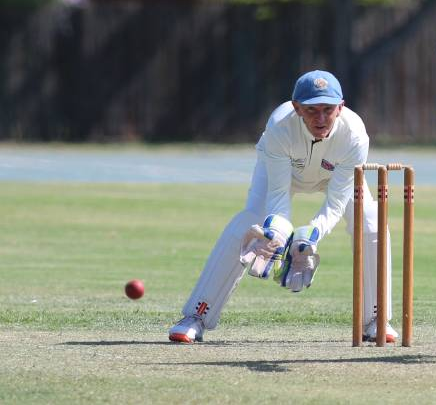
0 Followers
How important is the relationship between a spinner and their wicket keeper?
Partner Sponsors
Responses
Any time a wicket keeper keeps up to the stumps to a bowler it changes the nature of their partnership. The advantage being sought is that the keeper is one step ahead of the batter in knowing what the bowler is trying to achieve. This not only includes the style of spinner they are and how they are trying to beat either side of the bat, but pace, potential leg side stumpings and bringing LBW into play. The more work they can do together the better.
Critical. Let's face it. The bowler is the one who does the really hard work here. I say that as a wicket keeper acknowledging that our job is to support the bowler (in no way do I understate the importance of the keeper but making the point that the bowler has a very difficult job). The bowler needs to TRUST and have CONFIDENCE in the keeper. It is therefore a special relationship. I had the privilege of keeping to 2 amazing spinners when I was playing in Steve Whitfield and Peter Taylor who often bowled in tandem. They needed to be able to have confidence to bowl to their plan with real confidence that i was 100% aligned to the plan and was able to support them, and execute my part. Same with the slips (it helped we had Mark Taylor and Neil Howlett in slips!). CONFIDENCE comes from TRUSTING the keeper and also leads to the discussions that the keeper can have with the spin bowler about potential changes to their game plan based on what the keeper is seeing. And let's not forget the noise the keeper makes to support the bowler. I have to say that I still hug all my bowlers every time i see them even after all the years have passed because I feel a special bond with them.
Vitally important. It’s a special relationship and I’ve often said a spinner is only as good as their wicket keeper.
As Tim terrifically articulated the spinner (like all bowlers) does all the hard word and it’s not a great feeling behind the stumps when you let your spinner down through a dropped catch, missed stumping or even letting byes through.
A spinner needs to be patient and work over a batter, and it takes time. They need to have the confidence their keeper will be there for them at any time.
Helping their spinner and captain with fields settings and angles to maintain pressure. Challenging the fielders to make sure there’s no easy singles to allow the spinner to build pressure on the one batter.
Supporting their spinner with words of encouragement and politely letting the batter know the spinner is doing things they can’t see with also help build pressure.
It’s critical, the more work spinner do with their wicket keepers do at training together the better.
Keeping in the nets to the spinners is so valuable. Being able to see the spinners variations and working with them will help during the pressure situation of a game. It may just be the difference of taking a thicker edge catch during a game or dropping one.
One training drill between a spinner and wicket keeper I believe gets lost a little doesn’t have to involve a pitch, batter or nets. You can do it anywhere.
Most spinning coaches will tell a spinner the importance of consistency of length and forcing the batters into more forward pressing strokes.
To do so the spinner needs to pitch the ball in a certain area of the pitch to bring the batter forward.
A very useful training drill is for the wicket keeper to crouch in what would be considered that area of the pitch and for the spinner to bowl the ball into the wicket keepers’ gloves.
This repetitive action allows the spinner to know whether they’re hitting the right areas consistently and allows the wicket keeper to understand and practice keeping to the variations of their spinner.
It is a very important relation and working together builds the camaraderie and confidence in each other.
As important as a keeper and his spinner. Any keeper will tell you he’d rather take a stumping than a catch, spinners give that opportunity. Your keeper may be able to see things about a batsman you don’t. He can get the angles right. ( where the batsman is likely to hit the ball). So working together at training is paramount.
Keepers need to learn variations, pace turn so spinners gain confidence in there keeper and try things knowing we’ve got their backs.












Brilliant Tim, love it